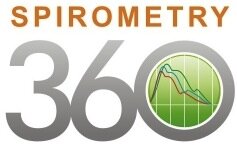Spirometry is the only objective measure of lung function generally available in primary care. Peak flow is no longer recommended for asthma or COPD diagnosis or severity assessment. Up to one-third of patients with mild or severe asthma are identified by spirometry who would be missed by history alone.
Why use spirometry in a primary care setting?
- Helps with asthma and COPD diagnosis
- Helps properly assess disease severity
- Provides a quantitative measure of lung function
- Guides medication changes for asthma
- Helps detect other respiratory conditions
- Is a reimbursable test
- Is a required HEDIS measure for the assessment and diagnosis of COPD
Spirometry allows you to evaluate a patient for:
- The presence of restrictive or obstructive defects in lung function
- The severity of obstructive defects in lung function
- Change in lung function over time
Patients ≥ 5 years old experiencing any of the following may benefit from spirometry:
- Asthma
- COPD
- Recurrent bronchitis
- Wheezing
- Frequent use of albuterol
- Dyspnea
- Orthopnea
- Over inflation
- Expiratory slowing
- Cyanosis
- Chest deformity
- Shortness of breath
- Shortness of breath during exercise
- Unexplained crackles
- Chest pains
- Chronic cough
- Exposure to environmental triggers
- All smokers > 45 years old
- Risk for pre-operative

